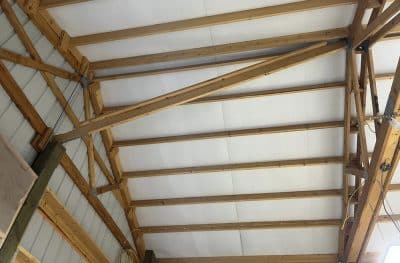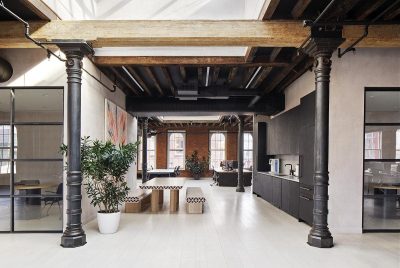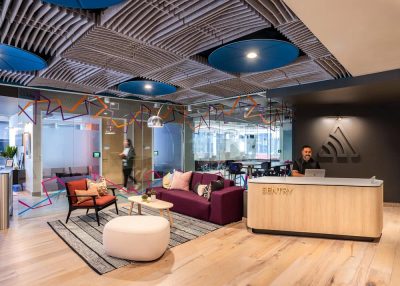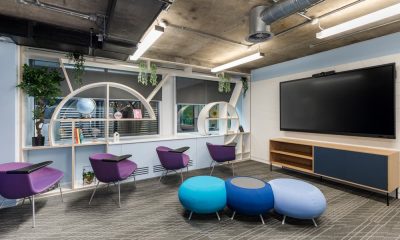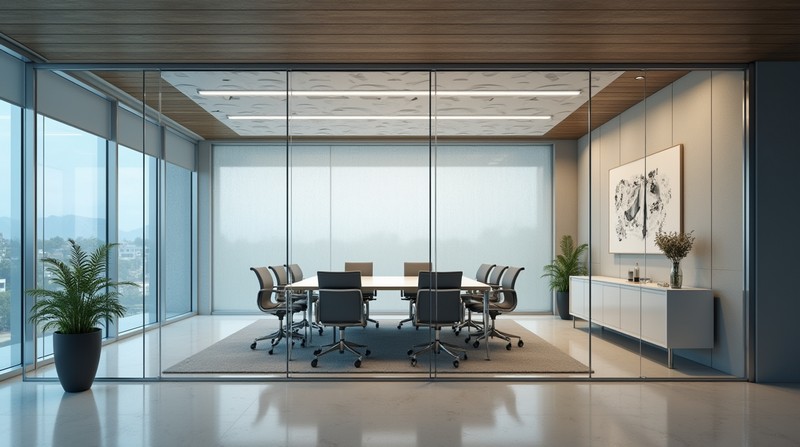
In the world of architecture and interior design, we often focus on what we can see—form, color, light. But in shaping truly functional spaces, sound is just as critical. Acoustic comfort influences how we feel, think, and work inside a space. Whether it’s a creative studio, open office, or hybrid workspace, managing sound isn’t a luxury. It’s a necessity for productivity, focus, and wellbeing.
Modern workspaces are packed with distractions. Conversations, clacking keyboards, air conditioning units—each layer of noise adds up. This isn’t just annoying background. It chips away at our ability to concentrate and process information. Noise pollution in the office is a silent productivity killer, leading to fatigue, stress, and a sense of overwhelm. The more open and collaborative our offices become, the more pressing this issue grows.
That’s where acoustic innovation steps in. A sound masking system for office environments helps create a consistent and controlled ambient sound. It doesn’t cancel noise but covers it in a way that makes speech less intelligible and background distractions less noticeable. This subtle shift dramatically improves focus without adding visual clutter or isolating people. It’s a smart solution for modern workspaces that balance openness with performance.
The Psychology of Sound in Workspace Design
How Ambient Noise Affects Cognitive Performance
Our brains are wired to respond to sound. Even when we try to ignore it, background noise pulls attention away from tasks. Open-plan offices, in particular, expose workers to sudden, unpredictable sounds—interruptions that increase cognitive load and reduce accuracy. The result? Slower thinking, more mistakes, and mental fatigue.
But sound isn’t just a distraction. It plays a psychological role. Spaces that feel too quiet can be equally unsettling, triggering a sense of discomfort or hyperawareness. The right ambient sound levels help people feel grounded and focused. It’s about balance—just enough sound to promote privacy, not so much that it becomes overwhelming.
The Connection Between Acoustic Environment and Employee Wellbeing
Noise is more than a workplace annoyance. Over time, chronic exposure to disruptive sound raises stress levels and can lead to burnout. Research links poor acoustic environments to headaches, increased heart rate, and decreased job satisfaction.
Employees working in acoustically tuned environments report feeling calmer and more in control. They’re able to concentrate longer and collaborate without straining to be heard or blocking everything out with noise-canceling headphones. The mood and morale of a team are tightly connected to the sensory experience of the space they inhabit. Get the sound right, and everything else starts to click into place.
Understanding Sound Masking Technology
What Makes Sound Masking Different from Traditional Noise Control
Sound masking isn’t about blocking sound. It’s about adding sound—specifically engineered background noise that blends into the environment and reduces speech intelligibility. This is what sets it apart from traditional acoustic treatments like soundproofing, which tries to block sound from entering or leaving a space, or acoustic panels, which absorb reverberation and control echo.
Whereas soundproofing isolates a room physically, and absorption reduces reflections, sound masking works within the acoustic field. It fills in the gaps, creating a smooth, uniform sound landscape that reduces the contrast between ambient noise and disruptive sounds. Think of it as adjusting the contrast on a photo—not erasing what’s there, but making it less noticeable to the eye (or ear).
This makes sound masking especially effective in open-plan offices, coworking spaces, and environments where full isolation isn’t possible or desirable. Unlike physical barriers or heavy materials, it offers acoustic control without impacting the openness or flexibility of the space. It supports spontaneous collaboration without sacrificing privacy or focus.
The Science Behind Effective Sound Masking
A well-designed sound masking system doesn’t just blast generic white noise into the air. It uses precisely tuned sound profiles, shaped to align with the frequencies of human speech, typically in the 1000–4000 Hz range. This targeted approach ensures that spoken words become less intelligible at a distance, while the overall acoustic environment feels natural and non-intrusive.
But frequency is only half the equation. Volume is equally critical. If the masking sound is too loud, it draws attention to itself and becomes a new source of irritation. Too soft, and it fails to mask speech effectively. The ideal range for sound masking typically falls between 40–48 dBA, depending on room size, layout, and ambient noise levels.
Additionally, the delivery system matters. Speakers must be evenly distributed and calibrated to ensure uniform coverage without noticeable “hot spots” or “dead zones.” Advanced systems allow zoning, where different areas can have tailored masking profiles based on activity, occupancy, or acoustic needs. For instance, a quiet library zone may need lighter masking than a busy open workspace.
In many modern systems, AI and sensors are used to auto-adjust masking levels based on real-time sound conditions. This ensures the system is always responsive to the dynamics of the space—quiet when it needs to be, present when it matters most.
Sound masking isn’t a one-size-fits-all solution. It’s a precision tool that, when implemented properly, enhances the functionality and emotional feel of a space without ever being seen or consciously heard.
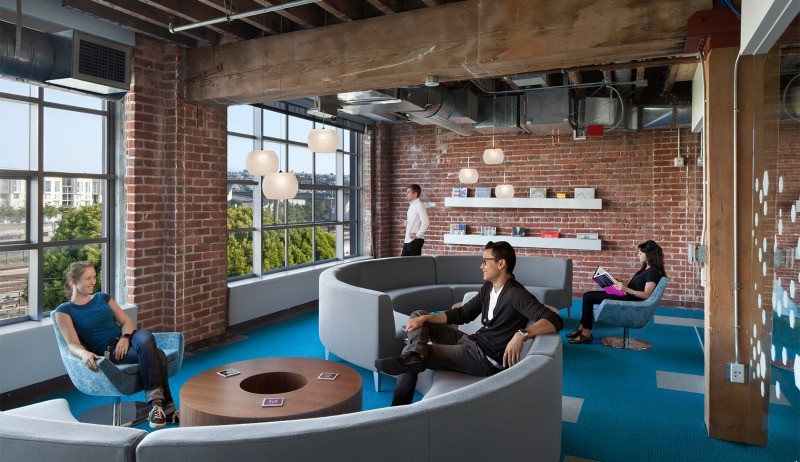
Integrating Sound Masking into Modern Office Design
Architectural Considerations for Sound Masking Implementation
The most effective sound masking systems are those that are planned from the ground up. Integrating sound masking at the early stages of architectural design—alongside HVAC, lighting, and IT infrastructure—allows for a cleaner, more efficient implementation. This includes strategic zoning based on room function, optimal speaker layout, and coordination with ceiling types and mechanical systems.
For example, open work areas, private offices, conference rooms, and wellness spaces all have different acoustic demands. Zoning the sound masking system accordingly ensures that each area gets the acoustic coverage it needs—no more, no less. Acoustic consultants can help architects model sound behavior and plan out emitter density, sound distribution patterns, and control system access.
However, even in built environments, sound masking can be introduced without major renovations. Modern systems are often modular and wireless, which means they can be installed with minimal ceiling disruption or rewiring. This makes them ideal for adaptive reuse projects, tenant improvement work, or retrofitting legacy office floors to meet new acoustic standards.
What’s crucial, whether in new builds or upgrades, is a tight alignment between the acoustic strategy and the spatial intent of the design. The goal is not just to solve for noise, but to enhance the functionality and user experience of the space in a way that complements the architecture.
Aesthetic Integration in Contemporary Workspaces
Visual coherence matters. In today’s design-forward workplaces, any system that becomes part of the space must align with its aesthetic tone. Fortunately, sound masking technologies have evolved to become visually discreet and stylistically neutral.
Emitters are typically mounted above acoustic ceiling tiles, hidden inside integrated lighting elements, or flush with drywall in drywall-ceiling applications. Some systems even offer speaker housings that match ceiling finishes or can be painted to blend in with surrounding materials. For exposed ceilings, there are pendant-style emitters that match industrial design schemes.
This flexibility allows designers to maintain the integrity of their vision, whether it’s a clean-lined Scandinavian minimalism, a raw industrial loft, or a biophilic environment filled with natural textures. In every case, the system works behind the scenes, enhancing comfort and productivity without becoming a visual distraction.
Sound masking can also be coordinated with smart building systems. In high-end projects, designers may integrate control interfaces into user-friendly dashboards or mobile apps, allowing facilities managers to fine-tune acoustic zones easily. This fusion of form and function helps elevate the acoustic infrastructure into a seamless part of the workplace experience.
When thoughtfully integrated, sound masking becomes an invisible layer of design—one that supports not only how a space looks, but how it feels and performs day to day.
Practical Implementation Guide for Designers
Assessment and Planning Phase
Before anything is installed, the space needs to be analyzed. Designers should work with acoustic professionals to evaluate noise sources, speech privacy requirements, and occupancy patterns. The layout, ceiling height, and materials all impact how sound travels and how masking should be applied.
Once the needs are clear, selecting the right system becomes easier. Factors like adjustability, zoning flexibility, and integration options play a role in choosing a solution that aligns with the project’s goals.
Installation and Fine-tuning Considerations
Installation is as much about calibration as it is about hardware. After mounting speakers or emitters, the system must be tuned to match the acoustic characteristics of the space. This process includes adjusting frequency curves, testing sound levels, and ensuring uniform coverage.
Even in dynamic environments—like flex work areas or multi-purpose zones—sound masking can be adjusted over time. This adaptability is one of its strongest features. The result is a tailored acoustic environment that supports both focus and collaboration.
Designing for productivity isn’t just about what people see—it’s about what they hear. In the age of hybrid work and sensory overload, acoustic comfort is no longer optional. It’s a core element of effective spatial design. A well-implemented sound masking system empowers teams to think clearly, feel better, and do their best work. When sound is shaped with intention, spaces come alive—not with noise, but with purpose.



